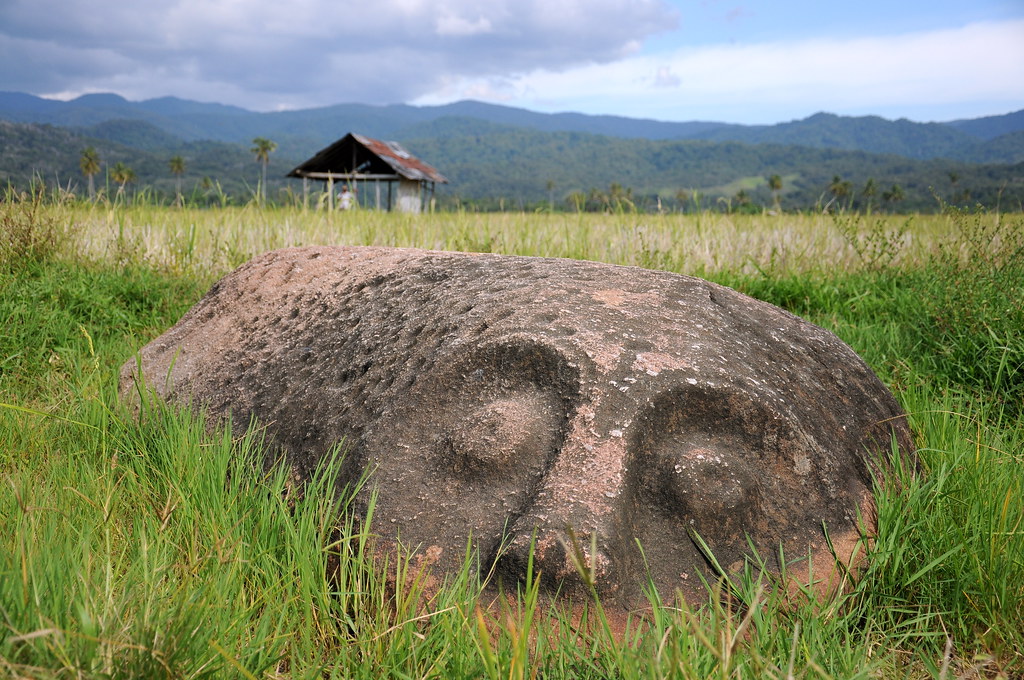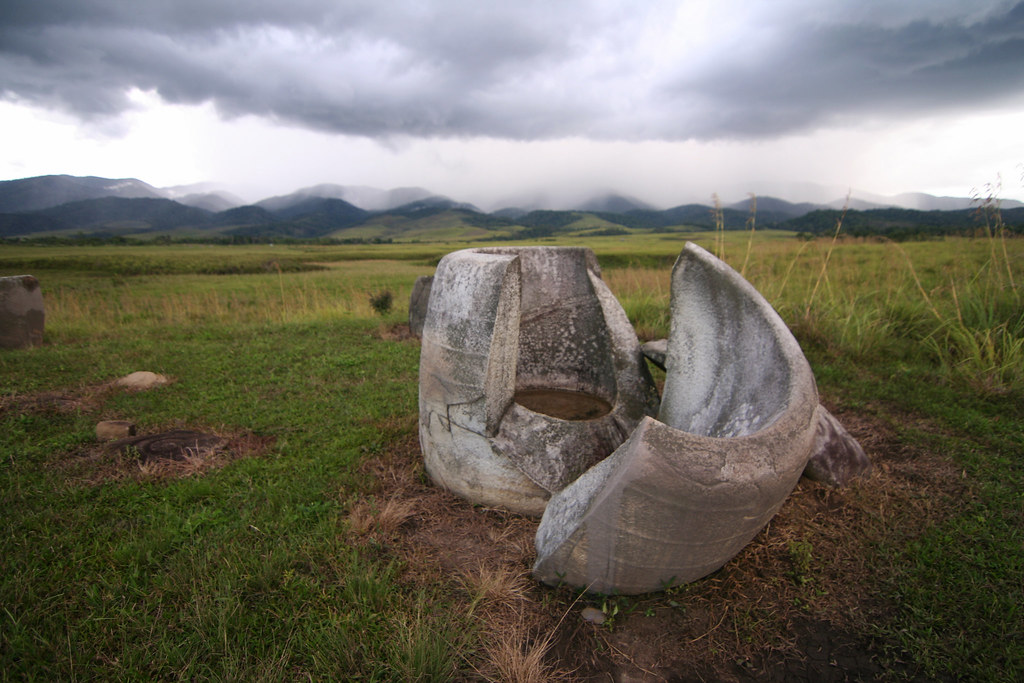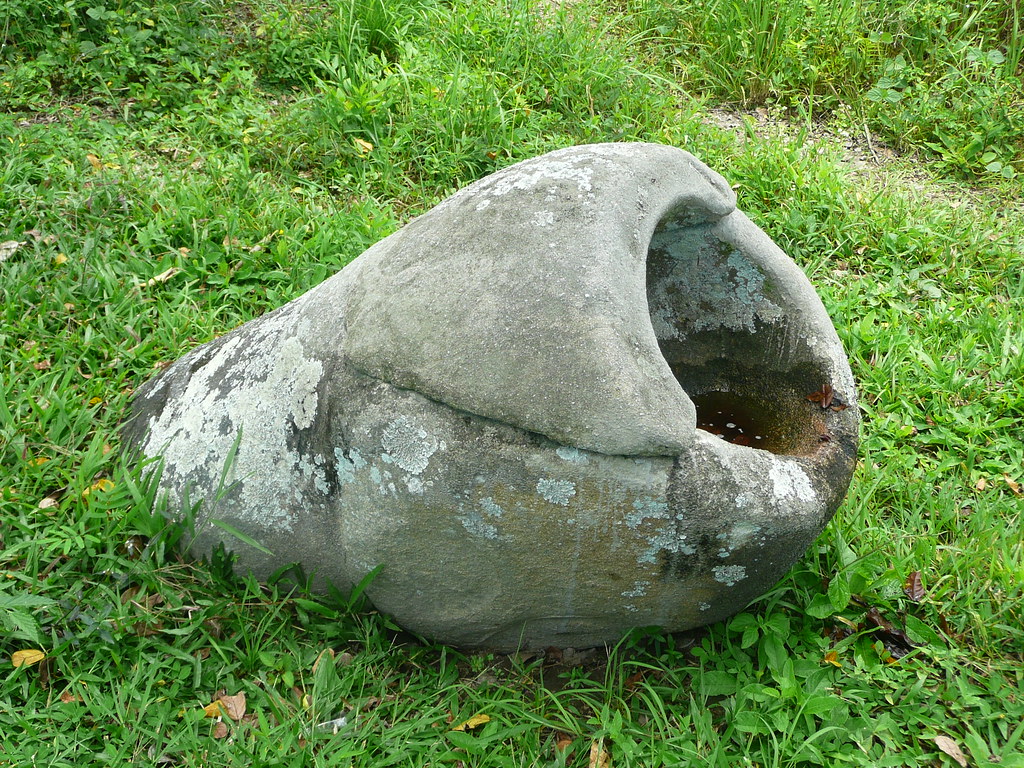About 15 km to the south of Lore Lindu National Park on the Indonesian island of Sulawesi, in an area known as Bada valley, there are several carved megalith figures reminiscent of the Moai statues of Easter Island. The statues have straight bodies, oversized heads, round eyes, and a single line to define eyebrows, cheeks, and chin. Most of them stand alone half buried in the fields, obscured by long grasses. Others are toppled over in rivers. So far, more than four hundred carvings have been found in the area, but only about thirty are in the shape of humans figures.
Although the site was discovered more than a hundred years ago, very little is known about the ancient culture who made them. We don’t even know when these megaliths were carved. Proposed dates ranges from 1,000 years to 5,000 years ago.
The megaliths were known to the locals for centuries before the Europeans found them. Based on the gender of the statues, identified from the clearly visible genitals, they have been given various names. There is a male named "Palindo" or "Entertainer", which is four meters tall and is the largest of the megaliths. Another called "Langke Bulawa" (or "Golden Bracelet") is a 1.8-meter-tall figure of a female. The villagers have weaved all sorts of tales around these characters. For instance, Palindo was said to be the court jester and was placed facing the ancient palace of the king. Its leaning stance is said to have come from the furious fights which raged between local tribes that disturbed his serenity. Then, there are less likable characters such as Tokala'ea, who was said to be a rapist turned to stone. The deep cut marks in the rock represent scars from knives. Another statue named Tadulako was once a trusted village protector but was turned to granite for stealing rice. And so on.
The statues are not the only megaliths in the area. As already mentioned, there are more than four hundred carvings in the area. Some of these, called kalamba, are circular stones resembling pots and cisterns. According to local folklore, they are ancient bathtubs used by kings. In reality, the kalambas might have been grain storage pots. Some of them even has heavy lids. Some kalambas are also accompanied by stone tablets with cavities, perhaps used for grinding food.
The strangest thing is, aside from these abandoned stone megaliths, no tools, remains of settlements or other evidence of the society that built them has ever been found.
Photo credit: Magdalena & Thomas/Flickr
Photo credit: Magdalena & Thomas/Flickr
Photo credit: Magdalena & Thomas/Flickr
Photo credit: Magdalena & Thomas/Flickr
Photo credit: Incito Tour/Panoramio
Photo credit: www.asiantrails.travel
Sources: Nat Geo / Revelations of the Ancient World / www.megalithic.co.uk





















Comments
Post a Comment